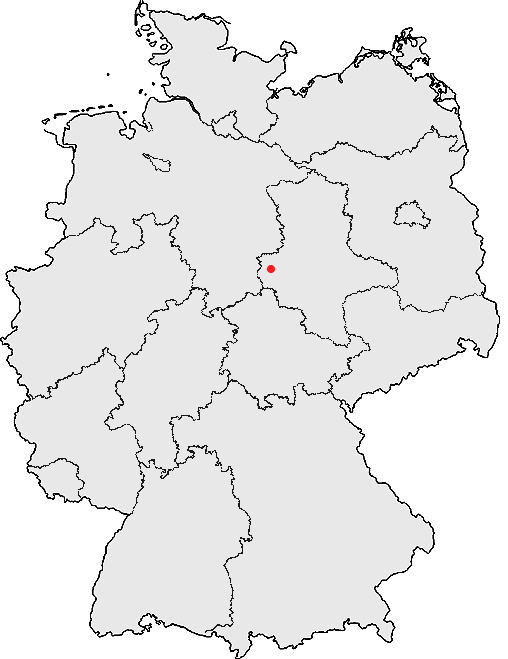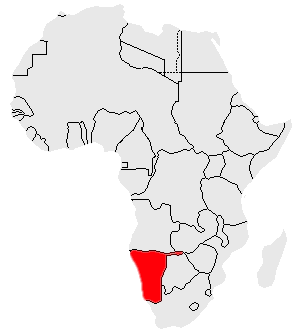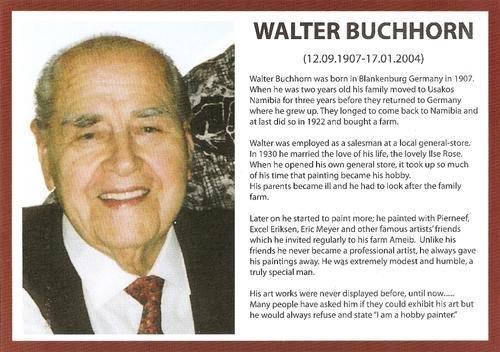 Buchhorn from Blankenburg to South-West Africa
Buchhorn from Blankenburg to South-West Africa
A Buchhorn family from Blankenburg went into a complete other direction. Marie Buchhorn, 36 years old, married, and Anna Buchhorn, 25 years old, married, left Germany via Hamburg and traveled to South-West Africa on May 17, 1911. They were accompanied by 5 children: |
Mothter Anna Buchhorn, geb. 1886
Gertrud Buchhorn, 9 month old (born ca. 1910)
Frieda Buchhorn, 3 years old (born ca. 1908)
Willy Buchhorn, 4 years old (born ca. 1907) |
Mothter Marie Buchhorn, geb. 1875
Anna Buchhorn, 9 years old (born ca. 1902)
Walter Buchhorn, 4 years old (born 12 September 1907) |

Blankenburg at the Harz Mountains |
German South-West Africa was a colony of the German Empire from 1884 until 1915, with an area of 835,100 km², it was one and a half times the size of the mainland German Empire in Europe at the time. German-South-West Africa was the only of the German colonies were a worth mentioning number of German settlers made their home. in 1915, during the 1. world war, was the area conquered by troups of the South African Union and was put under their military administration. After the war, the territory came under the control of Britain, and then was made a South African League of Nations mandate. South Africa also installed the aparthaid in this country. The UN withdrew South Africa's mandate in 1966. The independence of the Republic of Namibia was declared in 1990. | 
German South-West Africa, the present Namibia |
Captain Curt von François founded Swakopmund in 1892 as the main harbour for the Imperial German colony—The deep sea harbour at Walvis Bay belonged to the British. The founding date was on August 8 when the crew of gunboat Hyäne ("Hyena") erected two beacons on the shore. Swakopmund was chosen for its availability of fresh water, and because other sites further north such as Cape Cross were found unsuitable. The site did, however, not offer any natural protection to ships lying off the coast, a geographical feature not often found along Namibia's coast.
When the first 120 Schutztruppe soldiers and 40 settlers were offloaded at Swakopmund, they had to dig caves into the sand for shelter. The offloading was done by Kru tribesmen from Liberia who used special boats. Woermann-Linie, the operator of the shipping route to Germany, employed 600 Kru at that time.
In 1902 was the erection of a pier started. The first pier was made of wood but in 1912 was a new pier built made of steel. The popular pier is called "Jetty" by the Swakopmund people today.
At exact that pier must also landed our two Buchhorn families. Why they came to South-West Africa is not known. Who were the husbands? Magistrates, soldiers? Employees of the German Empire who earned their daily bread in South-West Africa? Or were they immigrants?
The ship they used for their journey was the "Prinzregent" of the "German-East-Africa Line" and was not an immigrant ship. |
Mrs Debbie Woolf from England sent some information about a Walter Buchhorn who lived in South Africa. She told me that this Walter Buchhorn came to Africa before World War 1 and that he lived in Namibia a long time.
As WW1 broke out, he returned to Germany but he came back after the war. He was a passenger of the first commercial flight to Namibia.
He lived in Usakos where he met and married a Mabel Phillips. Mabel was also born in Germany. Both lived on the Ameib Farm near Usakos which belonged to his father-in-law Emil Phillips.
During World War 2, Walter Buchhorn was interned into a camp. After Walter's internship ended, he worked on the farm and in a local shop. With the support of his wife's family he did open his own shop. Later Mabel and Walter sold the farm and lived in Zimbabwe, then moved on to South Africa.
After Mabel's death, Walter lived in a hotel until he bought a flat for himself and his friends ,Swanni and Honni. Mrs Woolf thinks Honni was like a personal nurse to him. Walter Buchhorn died in 2004 or 2005. |
Another source tells a similar story:
Ameib farm was owned by an American Emil Philipps, back in the 1930's. Mr Philipps married a German woman an early settler. She had a daughter from a previous marriage who married Walter Buchhorn another German settler. Walter was a young boy when he arrived in Namibia with his mother just after the First World War and settled in Usakos. During the 2nd World War Walter was interned for 5 years in a prison camp. During this time Walter would draw pictures on old paper bags, he was very talented. He settled back on the farm and got a job in the local supermarket after he was released. Walter worked very long hours with hard labour. The Philipps family was convinced of him and bought an shop what he managed. Eventually Walter inherited the farm and the shop, in the 1990's he sold both and he and his wife moved to Zimbabwe. After 5 years they moved to South Africa and settled in Cape Town, his wife died in 1998. Walter passed away in 2004, aged 96 years. |
| The last evidence brought another finding in the internet but, unfortunately, with contradictory information: |
 |
Walter Buchhorn
(12.09.1907 - 17.01.2004) Walter Buchhorn was born in Blankenburg Germany in 1907. When he was two years old his family moved to Usakos Namibia for three years before they returned to Germany where he grew up. They longed to come back to Namibia and at last did so in 1922 and bought a farm.
Walter was employed as a salesman at a local general store. In 1930 he married the love of his life, the lovely Ilse Rose. When he opened his own general store, it took up so much of his time that painting became his hobby.
His parents became ill and he had to look after the family farm.
Later on he started to paint more; he painted with Pierneef, Excel Erikson, Eric Meyer and other famous artists' friends which he invited regularly to his farm Ameib. Unlike his friends he never became a professional artist, he always gave his paintings away. He was extremely modest and humble, a truly special man.
His art works were never displayed. Many people have asked him if they could exhibit his art but he would always refuse and state "I am a hobby painter." |
| I hope to find much more about him and his family. Your help is needed. |
 Wolfgang Buchhorn 17. Juni 2014 Wolfgang Buchhorn 17. Juni 2014 |

